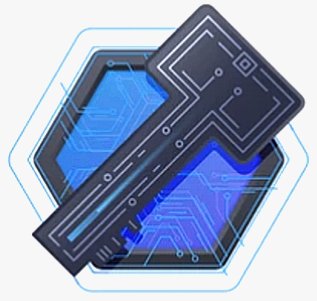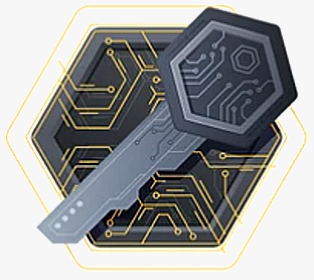Accredited InvestorsAltcoinAnatoli UnitskyAnti-Money Laundering (AML) In CryptoAPIArbitrageArtCoin TokenArticle DirectoryASICAuction Terminology GlossaryBasics of Stock Market InvestingBear MarketBest Crypto Payment Provider In the WorldBitcoinBlockchainBlockchain ConfirmationBlockchain Consensus MechanismBlockchain ForkBlockchain GlossaryBored Ape Yacht ClubBuild a Business That OutperformsBull MarketBuying SkyWay SharesByzantine Fault Tolerance (BFT) ExplainedCasascius CoinCentral Bank Digital Currency (CBDC)Centralized Crypto ExchangeCoinCoinsetCold WalletCollateralCommodity Futures Trading Commission (CFTC)Cross-Chain TechnologyCRUCrypto ExchangeCrypto GlossaryCrypto JokesCrypto Terms to KnowCrypto TickerCryptocurrencyCryptographyCryptojackingCryptounit BlockchainCryptounit GlossaryCryptounit ProgramdApp (Decentralized Application)Dead CoinDecentralized Exchange (DEX)Decentralized Finance (DeFi)Difference Between Bitcoin and EthereumDifferent Ways of Investing MoneyDigital CurrencyDistributed LedgerDo Your Own Research (DYOR)Dollar Cost Averaging (DCA)Dow Jones Industrial Average (DJIA)EncryptionERC-20ERC-721EthereumEvoScentFear Of Missing Out (FOMO)Fear, Uncertainty and Doubt (FUD)Fiat MoneyFNT Fintech CompanyGenesis BlockGlobal Unit PayGlossary of Banking TermsGlossary of Business TermsGlossary of Financial TermsHalvingHODLHot WalletHow Do I Start InvestingHow Rich is Satoshi Nakamoto?How to Create a BlockchainHow to Find Private InvestorsHow to Get Into FintechHow to Program Smart ContractsI Am Thrilled to Be a Part of This Global ProjectInitial Coin Offering (ICO)Initial Public Offering (IPO)Initial Token Offering (ITO)Innovation Basalt TechnologyInnovative Transportation TechnologiesInternational Bank Account Number (IBAN)Investing in Gold Mining StocksInvesting in Gold MiningJagerJoy of Missing Out (JOMO)Know Your Customer (KYC)LedgerLiquidity in CryptocurrencyMaker and Taker Fees in Crypto TradingMarket Capitalization (Market Cap)Meme CoinMetal Credit CardMetaMaskMillenials Now Have Access to Generational WealthMy Best Investment EverNew Digital EvolutionNFT GlossaryOff-Chain TransactionsOn-Chain TransactionsOpen Edition NFTPeer-to-Peer (P2P)Personal Loan GlossaryProbably the Best STO on the MarketProof of Stake (PoS)Real Estate Glossary of TermsReal Estate Investing GlossaryRebase TokenSecurities and Exchange Commission (SEC)Security Token ExchangesSecurity Token Offering (STO)Soulbound Decentralized Identities for Security TokensSoulbound ID Launch by Stobox Proves a SuccessSoulbound TokensStoboxStock Market GlossaryTestimonialsTether Platform and Token (USDT)UnitEx ExchangeUnitsky String TechnologiesUNTBUSDUValidatorWe Started Investing When We Were 25What are Blue Chip NFT?What are Blue Chip Stocks?What are Crypto Assets?What are Crypto Smart Contracts?What are CryptoPunks NFT?What are Digital Assets?What are Digital Collectibles?What are Gas Fees?What are Gas Wars?What are Hashmasks?What are Non Fungible Tokens?What are Non-Sufficient Funds (NSF)?What are Soulbound Tokens (SBT)?What are Stablecoins in Crypto?What are Transactions Per Second (TPS)?What are Utility NFTs?What are Utility Tokens?What Does Burning Crypto Mean?What Does Diamond Hands Mean?What Does Paper Hands Mean?What Does To The Moon Mean?What Does WAGMI Mean?What Happened to Satoshi Nakamoto?What is a 51% Attack?What is a Baby Boomer?What is a Backlink?What is a Banner?What is a Barcode?What is a Bid-Ask Spread in Crypto?What is a Block in Blockchain?What is a Block Reward?What is a Blockchain Address?What is a Blockchain Node?What is a Blockchain Oracle?What is a Blog?What is a Bond?What is a Bot?What is a Broker?What is a Business Accelerator?What is a Cash Cow?What is a Commercial Bank?What is a Commodity?What is a Con?What is a Credit?What is a Credit Limit?What is a Credit Rating?What is a Crypto Airdrop?What is a Crypto Bridge?What is a Crypto Scam?What is a Crypto Token?What is a Crypto Wallet?What is a Crypto Whale?What is a Crypto Winter?What is a Cryptocurrency Public Ledger?What is a Cryptocurrency Roadmap?What is a DAO?What is a Dark Pool?What is a Day Trader?What is a Dead Cat Bounce?What is a Default?What is a Derivative?What is a Digital Credit Card?What is a Fiscal Quarter?What is a Fungible Token?What is a Governance Token?What is a Grace Period?What is a Hard Fork?What is a Hot Wallet?What is a Hybrid Blockchain?What is a Hybrid PoW/PoS?What is a Joint Account?What is a Market Cap?What is a Merkle Tree in Blockchain?What is a Mining Farm?What is a Nonce? What is a PFP NFT?What is a POS System?What is a Prepaid Card?What is a Private Blockchain?What is a Private Key?What is a Public Blockchain?What is a Public Key?What is a Reserve Currency?What is a Ring Signature?What is a Routing Number?What is a Rug Pull in Crypto?What is a Safe Deposit Box?What is a Satoshi?What is a Security Token?What is a Seed Phrase?What is a Shitcoin?What is a Sidechain?What is a Soft Fork?What is a Spot Market?What is a State Bank?What is a SWIFT Code?What is a Tax Identification Number (TIN)?What is a Time Deposit?What is a Transaction Account?What is a Variable Interest Rate?What is a Virtual Assistant (VA)?What is a Virtual Card?What is a Virtual Currency?What is a Visa Card?What is a Whitelist in Crypto?What is a Whitepaper?What is Accounts Payable (AP)?What is AMA in Crypto?What is Amortization?What is an Accrual?What is an ACH Transfer?What is an Actuary?What is an Addendum?What is an Algorithm?What is an Angel Investor?What is an Annuity?What is an Asset?What is an ATM?What is an Atomic Swap?What is an Audit?What is an Avatar?What is an EIN?What is an Embargo?What is an Entrepreneur?What is an IDO (Initial Dex Offering)?What is an Interest Rate?What is an Internet cookie?What is an Investment Bank?What is an NFT Drop?What is an NFT Floor Price?What is an Ommer Block?What is an Orphan Block?What is an Outstanding Check?What is an Overdraft?What is Artificial Intelligence (AI)?What is B2B (Business-to-Business)?What is B2G (Business-to-Government)?What is Bartering?What is Bitcoin Dominance?What is Bitcoin Pizza Day?What is Blockchain Immutability?What is Blockchain Used For?What is BRICS?What is Business-to-Consumer (B2C)?What is C2C (Customer to Customer)?What is Capitalism?What is Catfishing?What is CFD Trading?What is Check Kiting?What is Cloud Mining?What is Communism?What is Content Marketing?What is Decentralization in Blockchain?What is DeFi in Crypto?What is Delisting?What is Depreciation?What is Digital Marketing?What is Diversification?What is Double Spending?What is Dumb Money?What is Dumping?What is Earnings Per Share (EPS)?What is Economics?What is Email Marketing?What is Equity?What is Etherscan?What is Fintech?What is Foreign currency?What is Forex?What is Fundamental Analysis (FA)?What is GameFi?What is Generative Art NFT?What is Gwei?What is Hard Currency?What is Hash Rate?What is Hashing in Blockchain?What is Inflation?What is Initial Game Offering (IGO)?What is Interest?What is Interest Income?What is Mainnet?What is Mastercard?What is Metaverse in Crypto?What is Mining in Cryptocurrency?What is Minting NFT?What is Mobile Banking?What is Money Laundering?What is NFT Alpha?What is NFT Metadata?What is NFT Rarity?What is NGMI Meaning?What is Nominal Interest Rate?What is Online Banking?What is Open-End Credit?What is OpenSea NFT Marketplace?What is Personal Identification Number (PIN)?What is Play-to-Earn?What is Polygon?What is Proof of Authority (PoA)?What is Proof of Work (PoW)?What is Public Key Cryptography?What is Pump and Dump?What is Quantum Computing?What is Refinancing?What is Retail Banking?What is Ripple?What is Sharding?What is Slippage in Crypto?What is Smart Money?What is Solvency?What is Soulbound ID?What is SSL?What is Staking in Cryptocurrency?What is Technical Analysis (TA)?What is Testnet?What is the Ask Price?What is the Better Business Bureau (BBB)?What is the Bid Price?What is the Dark Web?What is the InterPlanetary File System (IPFS)?What is the Gold Standard?What is the Lightning Network?What is the Prime Rate?What is the Sandbox?What is the Secondary Market?What is the World Bank?What is Tier 1 Capital?What is Tokenomics?What is TRC-20?What is Universal Banking?What is Unspent Transaction Output (UTXO)?What is Usury?What is Volatility in Crypto?What is Wash Trading?What is Web3?What is Whisper?What is XRP?What is Zero-Knowledge Proof (ZKP)?Who is Beeple?Who is Satoshi Nakamoto?Who is Vitalik Buterin?Why Tokenization is a Safe HavenWhy You Should Try Your Hand at Trading
What is Public Key Cryptography?
- Home
- Blockchain Glossary
- What is Public Key Cryptography?
In today's world, where data is the new oil and privacy is a fundamental right, cryptography has become a critical tool for securing sensitive information.

Public Key Cryptography (PKC), also known as asymmetric key encryption, is a type of cryptography that has revolutionized the way we secure our digital assets.
What is Public Key Cryptography?
Public Key Cryptography is a cryptographic system that uses two keys, a public key, and a private key. The public key is used to encrypt data, while the private key is used to decrypt it. This system is different from symmetric key cryptography, where the same key is used for both encryption and decryption.
The public key can be shared with anyone, while the private key is kept secret by the owner. This means that anyone can send encrypted messages to the owner of the private key, and only the owner can decrypt them. This system allows for secure communication between two parties without the need for a shared secret.
Securing Blockchain through Robust Public-Key Cryptography: Threats and Mitigation Strategies
The security of blockchain is heavily reliant on the use of public-key cryptography, and therefore, the security of this cryptographic method is crucial.
Although the public key cryptography algorithms commonly used in blockchain are generally considered secure, their security can be compromised in several ways. Three primary threats to the security of public key cryptography in blockchain include:
- Poor random number generation: If a private key is generated using a weak random number generator, it may be easily guessable by an attacker, allowing them to generate a valid digital signature. In 2019, the "Blockchain Bandit" stole millions of dollars' worth of Ether by exploiting this vulnerability.
- Lost or stolen private keys: Even if an account's private key is securely generated, it can still be compromised if it is not stored securely. Many blockchain hacks involve the theft of private keys from insecure cryptocurrency exchanges or through phishing and SIM hijacking attacks.
- Quantum computing: The security of public key cryptography relies on the difficulty of the problems on which it is based. However, Shor's algorithm, which runs on a quantum computer, can solve the factoring problem in polynomial time, undermining the asymmetry of the problem. This renders the algorithm unusable and insecure. Post-quantum algorithms are based on problems that are still "hard" for quantum computers, making them a potential solution to this threat.
Uses of Public Key Cryptography
Public Key Cryptography (PKC) is a commonly used cryptographic technique that provides security for sensitive information in modern computer systems. For instance, emails can be encrypted using PKC to keep their content confidential. Additionally, the Secure Sockets Layer (SSL) protocol used to establish secure connections to websites employs asymmetric cryptography. PKC has also been explored as a means of providing secure electronic voting, allowing voters to participate in elections from their home computers.
PKC is also integral to blockchain and cryptocurrency technology. When a new cryptocurrency wallet is set up, a pair of keys (public and private) is generated. The public key is used to create a wallet address that can be securely shared, while the private key is used to create digital signatures and verify transactions, and therefore must be kept confidential.
After a transaction is verified by confirming the hash in the digital signature, it is added to the blockchain ledger. This digital signature verification system ensures that only the person with the private key associated with the corresponding cryptocurrency wallet can move the funds.
It's worth noting that the asymmetric cryptography used in cryptocurrency applications differs from that used in computer security. Bitcoin and Ethereum, for example, use a specific algorithm known as the Elliptic Curve Digital Signature Algorithm (ECDSA) to verify transactions. Additionally, the ECDSA creates digital signatures without encryption, meaning that blockchain doesn't require encryption, contrary to popular belief.
The Bottom Line
Public key cryptography is crucial in securing modern digital systems, ranging from computer security to verifying cryptocurrency transactions. Unlike symmetric ciphers, asymmetric cryptography algorithms use paired public and private keys to resolve fundamental security concerns. While PKC has been in use for many years, new uses and applications are continually being developed for it, particularly in the blockchain and cryptocurrency space.
Related Articles

Cryptography
To say the notion of encrypting data is novel is an understatement. People have been concealing communications since before the...

What is a Public Key?
The public key is created using asymmetric key cryptographic algorithms in public key cryptography. Public keys are used to encode data in an unreadable form. Decryption is performed with...

What is a Private Key?
Cryptocurrency is controlled by a set of digital keys and addresses that reflect ownership and control of virtual tokens. Anyone can deposit cryptocurrencies to any...

Encryption
Contrary to common assumption, most cryptocurrencies and their blockchain networks do not rely on encryption mechanisms. Instead, they rely on hash functions and...

What is Quantum Computing?
Quantum computing is a fast-growing technology that uses the principles of quantum mechanics to tackle problems beyond the capabilities of traditional computers.
- Home
- Blockchain Glossary
- What is Public Key Cryptography?